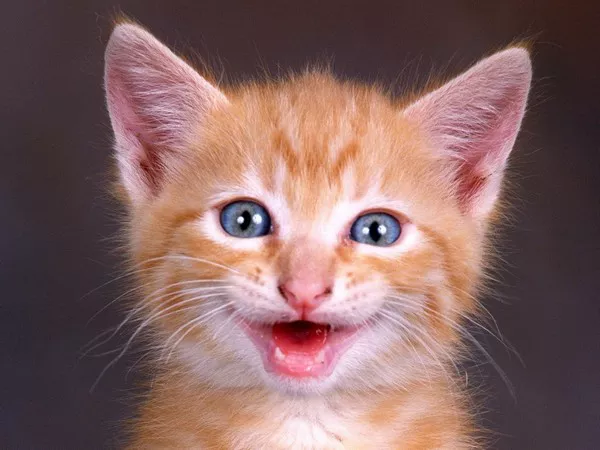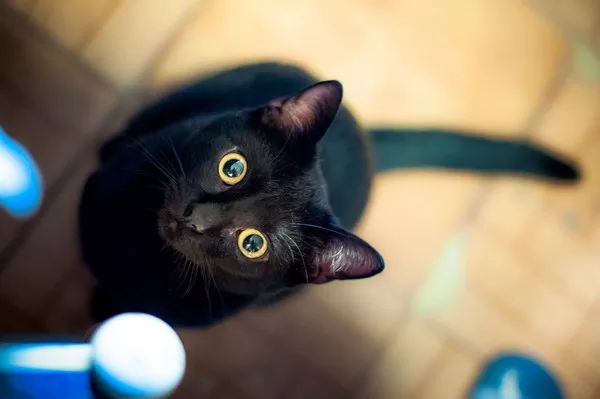Maintaining good dental health is not just important for humans—it’s essential for cats as well. Many pet owners are unaware that dental disease is one of the most common health issues for cats, but the reality is that by the age of three, most cats will show some signs of dental disease. Fortunately, with the right knowledge and proactive care, you can help your cat maintain a healthy mouth and avoid the pain and discomfort associated with dental problems.
This article will explore why cat health is deeply linked to dental care, the most common dental issues faced by cats, preventive care tips, signs of dental problems, and how to provide the best dental care at home and through professional veterinary services.
The Importance of Dental Health for Cats
Dental health plays a significant role in your cat’s overall well-being. Poor dental hygiene can lead to serious health problems, including infections, pain, and the spread of bacteria to other parts of the body, such as the kidneys, liver, and heart. Periodontal disease, which involves the inflammation and infection of the tissues surrounding the teeth, is the most common dental problem in cats. Without proper dental care, this disease can escalate, leading to tooth loss and systemic health issues.
Cats use their teeth for various activities like chewing, grooming, and hunting, so maintaining healthy teeth is vital for their quality of life. Cats with poor dental health may experience discomfort when eating, which can affect their appetite, and ultimately, their overall cat health.
Common Dental Problems in Cats
Periodontal Disease: The most common dental issue in cats, periodontal disease occurs when plaque and tartar build up along the gumline, causing inflammation and infection. Over time, it can lead to gum recession, bone loss, and tooth loss.
Tooth Decay: While not as common in cats as in humans, tooth decay (cavities) can occur, typically due to a diet high in carbohydrates and sugars. This condition leads to the erosion of the tooth enamel and can cause pain and infection.
Gingivitis: Gingivitis is the early stage of periodontal disease, marked by inflammation of the gums. It is usually caused by plaque buildup and can progress to more severe periodontal disease if left untreated.
Tooth Resorption: This is a painful condition where a cat’s tooth begins to break down and dissolve, often at the root, due to an unknown cause. It is one of the most common reasons for tooth extraction in cats.
Bad Breath (Halitosis): Foul-smelling breath is a common symptom of dental disease in cats. It can be an early warning sign of a buildup of bacteria in the mouth, leading to more severe issues.
Preventive Care Tips
Taking proactive steps to prevent dental issues in your cat can save them from pain and expensive treatments in the future. Here are some preventive care tips to improve your cat’s dental health.
1. Regular Brushing
Just as with humans, brushing your cat’s teeth is one of the most effective ways to prevent plaque and tartar buildup, which can lead to periodontal disease. Regular brushing removes the soft plaque that forms on the teeth, preventing it from hardening into tartar.
Brushing Technique: To brush your cat’s teeth, start slowly by getting them used to having their mouth touched. Use cat-specific toothpaste (do not use human toothpaste, as it contains ingredients harmful to cats). Use a soft brush or finger brush designed for pets, which is gentler on their teeth and gums.
Brush your cat’s teeth at least two to three times a week, if not daily. If your cat is resistant to brushing, be patient, and try to make the experience as positive as possible. Reward them with treats or praise after each session.
2. Dental Treats and Toys
There are various dental treats and dental toys available on the market that are designed to reduce plaque and tartar buildup. These treats and toys often have a rough texture that helps clean your cat’s teeth as they chew. Many dental treats are also fortified with enzymes that help break down plaque and reduce the risk of gum disease.
Dental Toys: Rubber or plastic toys that your cat can chew on help to stimulate their gums and clean their teeth. Look for toys specifically designed for dental health, as these are engineered to be safe and effective at removing plaque.
3. Diet and Nutrition
The food you feed your cat plays a significant role in maintaining good dental health. Cats that consume a balanced diet, with an emphasis on high-quality protein and the right balance of nutrients, are more likely to have healthy teeth and gums. In addition, certain types of food can help reduce the buildup of plaque.
Dry Food: While wet food is convenient, dry kibble can help to scrape plaque off the teeth as your cat chews. However, dry food should not be relied on exclusively as a method of cleaning your cat’s teeth, as it is not a substitute for brushing.
Special Dental Diets: Some brands offer dental diets designed to help reduce plaque buildup and support gum health. These diets usually contain special kibble shapes or ingredients that promote oral health.
Professional Dental Care
While at-home care is essential, professional dental care is also a critical part of maintaining your cat’s dental health. Regular vet visits can help catch dental problems early before they become more severe.
1. Regular Vet Check-Ups
Routine veterinary check-ups are necessary for monitoring your cat’s dental health. During a routine visit, the vet will examine your cat’s teeth and gums, looking for signs of periodontal disease, gingivitis, tooth decay, or other dental problems. A thorough dental exam can help detect issues before they progress.
The vet may recommend a professional dental cleaning if significant plaque or tartar is present.
2. Professional Cleanings
A professional dental cleaning is a more thorough cleaning than what can be done at home. It usually involves scaling and polishing the teeth under anesthesia to remove tartar and plaque that has built up below the gumline. The vet may also check for signs of tooth decay, abscesses, and other problems during the cleaning.
How often should professional cleanings be done? This depends on the cat’s age, dental health, and predisposition to dental problems. Cats prone to dental disease may need cleanings as frequently as once a year, while others may require less frequent visits.
Signs of Dental Problems
Knowing how to spot the signs of dental problems in your cat is crucial for early intervention. Cats are notorious for hiding discomfort, so it’s essential to keep an eye out for any behavioral changes or physical symptoms that might indicate a dental issue.
Behavioral Changes
Reduced Appetite: Cats with dental problems may avoid eating due to discomfort. They might chew on one side of their mouth or refuse to eat dry food.
Difficulty Eating: If your cat struggles to chew or seems to drop food from their mouth, they may have dental pain.
Pawing at the Mouth: Cats with dental issues often paw at their face or mouth in an attempt to alleviate discomfort.
Irritability or Aggression: Pain from dental problems can cause a cat to become more irritable or aggressive than usual.
Physical Symptoms
Bad Breath (Halitosis): Foul-smelling breath is often the first noticeable sign of dental disease in cats.
Red or Swollen Gums: Gum inflammation or redness, especially along the gumline, is a clear indicator of gingivitis or periodontal disease.
Loose Teeth: Advanced dental disease can cause teeth to become loose or even fall out.
Excessive Drooling: Cats with dental pain may drool excessively due to discomfort or difficulty swallowing.
Home Care Practices
Brushing Technique
Brushing your cat’s teeth effectively requires patience and consistency. Follow these steps:
Start Slow: Gently introduce your cat to having their mouth touched. Use your fingers to massage their gums before introducing the brush.
Use the Right Tools: Use a soft-bristled toothbrush and cat-specific toothpaste. Never use human toothpaste.
Brushing Motion: Gently brush in a circular motion, focusing on the outside surfaces of the teeth, where plaque tends to accumulate.
Consistency: Aim to brush your cat’s teeth at least two to three times a week.
Rinses and Gels
Dental rinses and gels are an excellent addition to your cat’s oral care routine. These products can help reduce plaque and freshen your cat’s breath. Many dental gels contain enzymes that break down plaque, and some rinses also have antibacterial properties.
How to Use: Simply apply the gel or rinse directly to your cat’s teeth, or in the case of rinses, add them to your cat’s drinking water. Always follow the instructions provided by the manufacturer.
Products for Cat Dental Health
Cat-Specific Toothpaste: Products such as Virbac C.E.T. Enzymatic Toothpaste or Petsmile Professional Toothpaste.
Dental Brushes: Finger brushes or small, soft-bristled toothbrushes designed for cats.
Dental Treats: Greenies Feline Dental Treats or Virbac C.E.T. Enzymatic Chews.
Water Additives: Water additives like Petsmile Oral Care Water Additive can help maintain your cat’s oral hygiene.
When selecting dental care products for your cat, consider their preferences and sensitivities. Some cats may be more sensitive to certain tastes, so it’s important to choose products that are safe, effective, and palatable.
Conclusion
Good cat health starts with a focus on dental care. By providing your cat with regular brushing, proper nutrition, and professional dental care, you can help ensure that they maintain a healthy mouth and avoid the discomfort and complications associated with dental disease. Be proactive in monitoring your cat’s dental health, and don’t hesitate to consult your vet if you notice any signs of dental problems. With the right care, your cat can enjoy a lifetime of healthy teeth and gums.
Related Topics



























